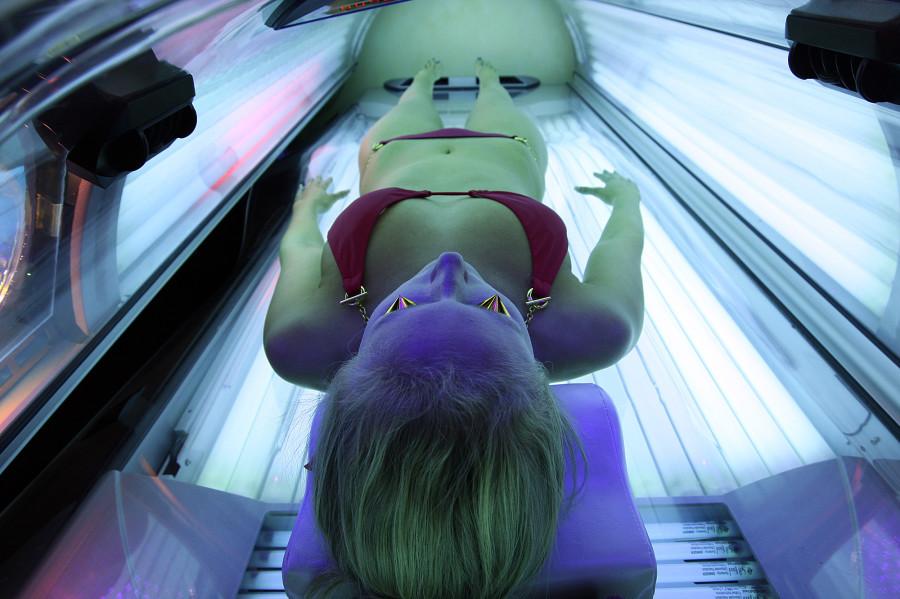By Jeremy Olson
MINNEAPOLIS — In the quest to look “better, cuter, hotter,” a troubling number of teenage girls in Minnesota are exposing themselves to harmful levels of ultraviolet light with tanning beds and increasing their risks of skin cancer.
Fully a third of white 11th-grade Minnesota girls have tanned indoors in the past year, according to a state survey released Tuesday, and more than half of them used sun beds, sunlamps or tanning booths at least 10 times in a recent 12-month period.
The results were sobering to public health officials and dermatologists, who have struggled to find a message as persuasive to teens as the desire to achieve mythic beauty or look bronzed in prom photos.
Indoor tanning beds deliver 10 to 15 times more ultraviolet radiation than natural sunlight and increase risks of developing melanoma by at least 59 percent, according to studies.
Yet many teens assume the consequences will strike other people or much later in life.
“Not so,” said Dr. Cindy Firkins Smith, a dermatologist and president of the Minnesota Medical Association. “I’m seeing 20-year olds with melanoma, and I’m seeing 30-year olds die of the disease.”
This is the first year that tanning bed usage by teens was included in the Minnesota Student Survey, which is compiled every three years by the state Health and Education departments. It assesses everything from how much milk and vegetables students consume, to the hours they spend texting, to the number of times they contemplate suicide or abuse drugs.
“Better? Cuter? Hotter? I don’t know what the motivation is” for tanning, Smith said. “Why do teenagers do anything? They drive too fast. Their brains aren’t fully developed … enough to make decisions that will affect them for the rest of their lives.”
While melanoma is treatable if found early — often when people notice changes in the shapes, sizes or colors of moles on their bodies — it is the deadliest form of skin cancer when discovered late. Researchers at the Mayo Clinic recently reported that the melanoma risk in women younger than 40 is now eight times greater than it was in the 1970s, before the growth in tanning salons, and that the risk in women ages 40 to 60 is now 24 times greater.
Smith said a telltale sign of the link to tanning is the number of “funny looking moles and brown spots where typically the sun doesn’t shine,” such as on breasts or buttocks exposed during tanning.
The Virginia-based Indoor Tanning Association, which represents indoor tanning manufacturers, distributors, and facility owners, said Tuesday there is a “growing body of science produced by independent medical professionals that demonstrates the many health benefits of regular moderate exposure to ultraviolet light, either from the sun or from a sun bed.”
It might be true that tanning beds can expose people to healthy vitamin D and give pick-me-ups to people depressed by long, gray winters, said Dr. Jerry Brewer, the Mayo dermatologist who led recent studies on increased cancer rates.
But vitamin D comes in cheap supplements, and there are other ways to weather the winter, he said. “Compared to having a cancer that could kill you, it’s just a no-brainer what you should choose.”
The message might be getting through, but not until after the teen years. Results of a similar national survey, released last summer, showed high rates of tanning bed usage started to decline when women reached their twenties.
Janey Helland of Fargo, N.D., started tanning in high school as a way to look good for prom or homecoming. Erin Haugen of Appleton, Minn., said it was the thing to do in her teens.
“You’re looking at magazines, you’re looking at these beautiful women, and they are usually tan,” Haugen said.
The two women, both 25, shared the same experience of discovering odd-shaped lumps on their skin and having surgeries after they were diagnosed with melanoma.
The tanning phenomenon is largely a female one. Among white 11th-grade boys in Minnesota, only one in 20 used a tanning bed at any time in the past year, according to the student survey data.
State lawmakers have begun confronting the problem; California, for example, bans tanning bed use by minors. In Minnesota, in-person parental permission is needed for anyone under 16 years old to use a commercially operated tanning bed. The state Health Department is also promoting a “UVideo Challenge,” calling on teens to create short videos about the dangers of tanning.
Smith hopes word will get out so she has fewer 20-year-olds regretting their life choices as teens. She lost a 30-year-old patient last year.
“If I could have changed one thing in my life,” Smith recalled the patient saying. “I wouldn’t have — and then she used an expletive — gone to the tanning booth.”



